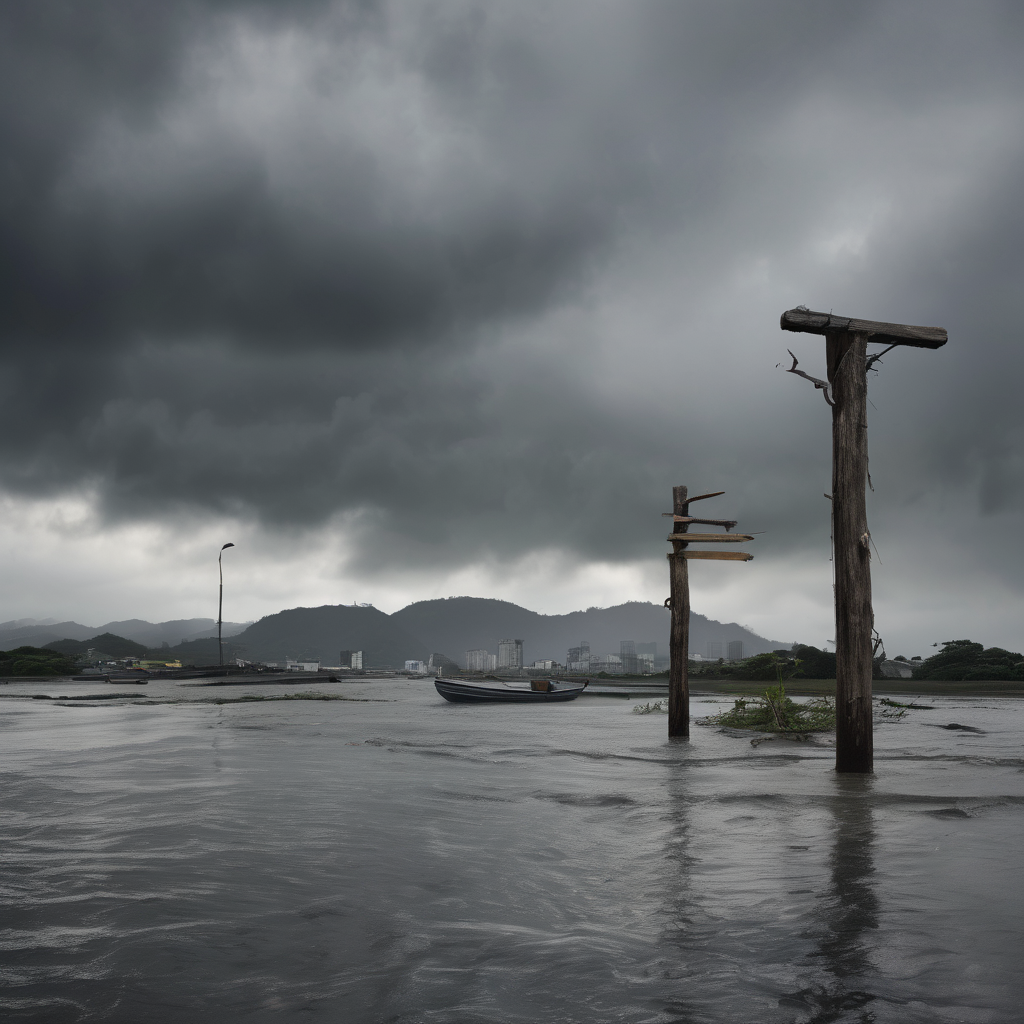In the picturesque town of Guangfu, located in the eastern part of Taiwan’s Hualien, tragedy struck as a lake overflowed, resulting in 17 confirmed fatalities following Typhoon Ragasa’s torrential downpour. This natural disaster, exacerbated by a barrier lake that burst due to landslides triggered by persistent rainfall, saw waters surge through the area, causing widespread devastation.
As Taiwan, a frequent target of typhoons, generally employs efficient disaster response mechanisms aimed at minimizing casualties, questions have been raised this time about the adequacy and timing of evacuation orders. Many residents felt caught off guard by the deluge, voicing concerns over insufficient warnings. In response, Premier Cho Jung-tai has demanded an inquiry to ascertain the reasons behind the apparent communication breakdown and to understand what went wrong with the emergency procedures.
Rescue operations are currently focused on locating the missing, with the initial count of unaccounted individuals dramatically lowered from 152 to 17 after many were found safe. Fire officials have confirmed that all deaths and those still missing are in Guangfu, where the floods destroyed critical infrastructure, including a major road bridge.
This incident resonates with similar weather-related tragedies globally. Recent catastrophic flood events, such as those in Beijing, which claimed numerous lives at an elderly care home, and severe flooding across Texas and Australia, reflect the urgent and growing need for improved disaster management and climate resilience strategies. These events reveal common themes: the unexpected ferocity of natural disasters and significant flaws in emergency preparedness measures, highlighting a universal call for strengthened infrastructure and improved warning systems.
Despite the challenging situation, the Taiwanese community’s spirit endures. Such disasters often bring communities together, forging solidarity and resilience even in times of despair. The strength of communities not only plays a critical role in immediate recovery efforts but also in the long-term rebuilding process.
Moving forward, it is essential to learn from such incidents to enhance preparedness and safety measures. Through collective efforts and comprehensive strategies, there is hope for a more resilient future capable of withstanding the increasing severity of natural disasters driven by climate change.
